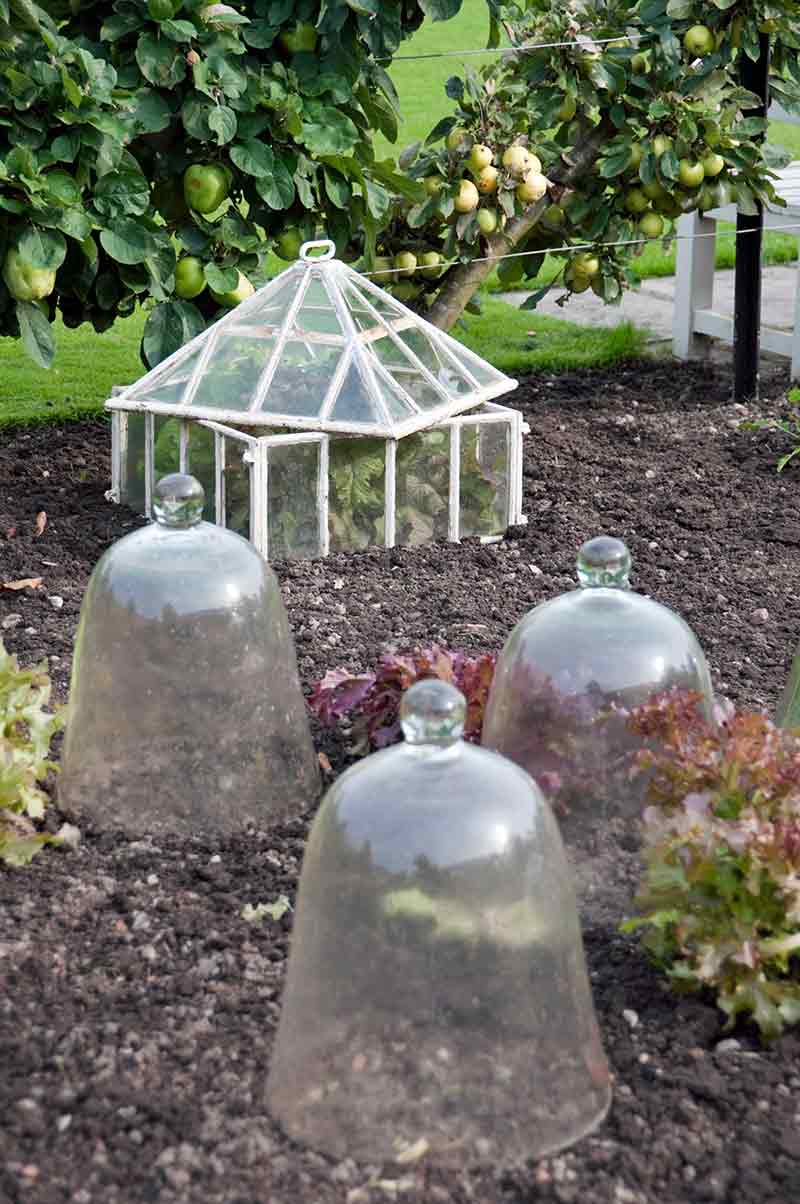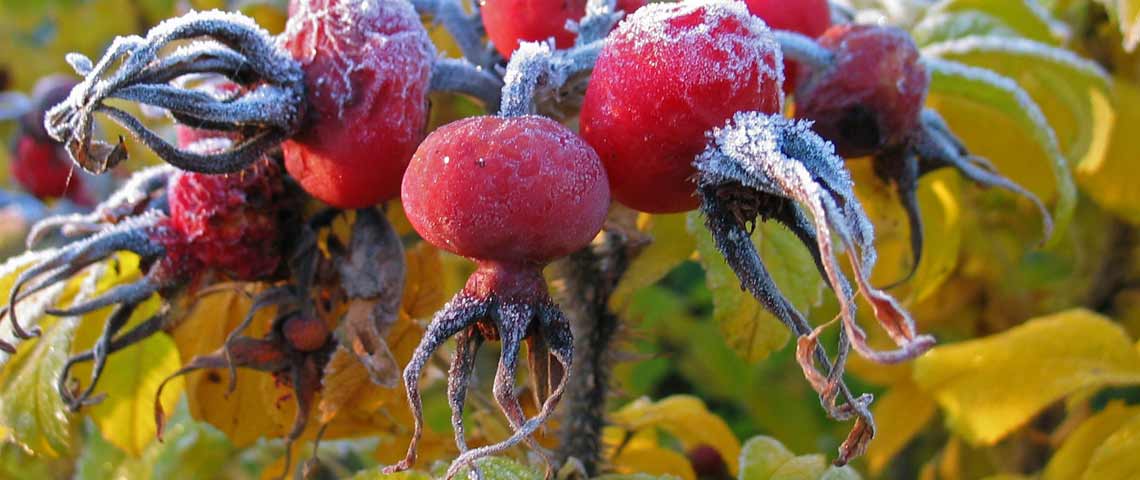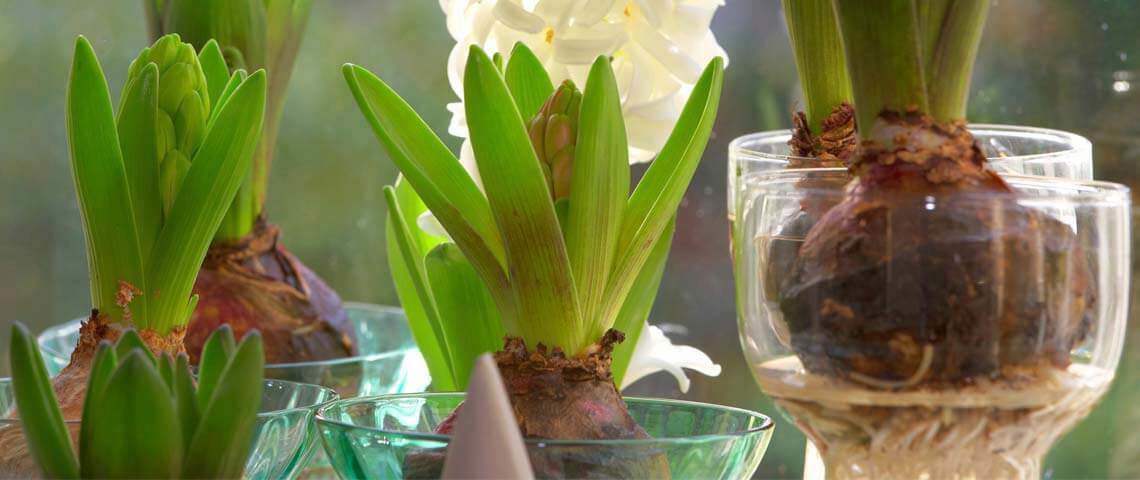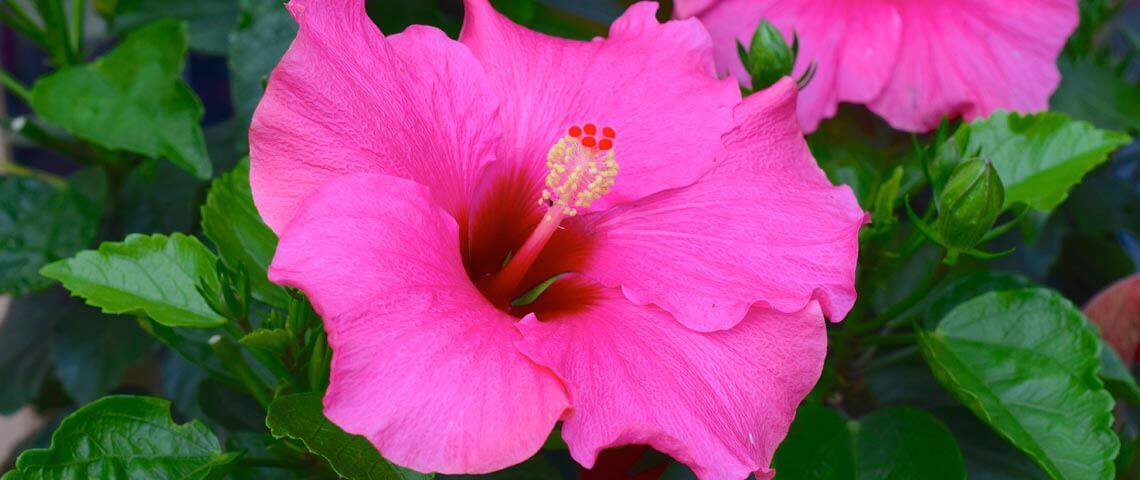How to Prepare Your Garden for Winter
Taking extra time and energy to winterize your garden helps keep it healthy and protected while you wait for the spring planting season. Whether winter in your region brings snow and frigid temps or more moderate conditions, timely winter preparations pay dividends.
These five winterizing tasks meet the needs of your plants and soil, prepare your garden for whatever winter brings and set the stage for spring planting:
- Finishing Annuals and Vegetables
- Prepping Perennials for Bed
- Readying Ornamental Shrubs
- Equipping Evergreens
- Tending Container Plants

Finishing Annuals and Vegetables
With just one growing season to give their all, annual flowers and vegetables deserve to begin with a clean slate. Once blooms pass and harvests end, use fall's waning days to clear old vegetables — roots and all — and improve soil for future plantings. Some diseases and pests can overwinter on plants, meaning they wait out wintry months of inactivity on old stems, leaves and roots and then start up again come spring. So, dispose of all garden debris at season's end.
Some cool-season crops, including kale and collards, sweeten when nipped by frost, and root crops stay protected. Leave these veggies as long as they deliver table-worthy produce. Protect tender plants from early frosts with lightweight, blanket-like garden fabrics known as row covers, which allow light through, but protect against cold, wind and pests. A regular bed sheet, used to cover plants overnight when temperatures drop, can prolong harvests, too. Traditional protective coverings, such as transparent, bell-shaped cloches or low, clear-topped, insulating structures known as cold frames, extend the harvest even longer. These simple coverings mimic greenhouses by allowing plants access to light, while creating protective, warm environments.
Nonstop annuals and well-fed vegetables use lots of nutrients during the season. So test the soil to determine what additions these heavy eaters need for next year. Incorporating fall soil amendments, such as Pennington Fast Acting Lime, puts gardens back on track by spring. If soil-wintering pests, such as hornworms, trouble you, fall tilling reduces their numbers, too.

Prepping Perennials for Bed
Healthy, well-nourished perennials enjoyed a final, late-summer feeding, but fall finds them headed for dormancy. So, avoid late feedings, as they stimulate new growth and interfere with cold tolerance. Also, cut back on water as fall progresses; water perennials only until your ground freezes, if freezing occurs in your region. Overly wet winter soil causes multiple problems, including root rot and premature death, even in warm-climate gardens.
In general, cut perennials back to a few inches above where the stems meet the plant's crown at soil level, once the first killing frost hits. Clean up and dispose of debris to limit overwintering diseases and pests. Leave perennials such as purple coneflowers, black-eyed Susans and ornamental grasses standing tall; their seed heads enhance wintry views and feed foraging birds. Bring extra stems indoors and dry them upside down for use in dried autumn arrangements.
Leave any borderline-hardy perennials unpruned, especially in exposed areas. The stems add protection and help hold mulch and insulating snow cover in place. Some tender tropical perennials, such as coleus, only survive outdoors in the warmest growing zones. Before frost hits, take simple cuttings and start new plants indoors.
Blanket northern perennials with a 4- to 6-inch layer of mulch after the ground freezes. Non-matting organic material, such as straw, shredded leaves or pine needles, insulates soil against unpredictable freeze-thaw cycles in late fall and early spring. In warm climates, focus on ongoing cleanup and monitor for diseases, pests or other stresses.

Readying Ornamental Shrubs
Healthy ornamentals proven in your climate shouldn't need much winterizing. But cold hardiness depends on dormancy, so let nature do its work. Stop fertilizing by late summer in all climates, and slow watering down so shrubs harden off. Avoid pruning, which stimulates new growth, delays dormancy and inhibits cold hardiness.
Protect buds and stems on sensitive spring-blooming shrubs, such as once-flowering hydrangeas, and tender roses. Wrap them in burlap or a protective, leaf-filled mesh to protect flower buds that produce spring blossoms. Mound 6 to 12 inches of soil over tender roses after the first killing frost, or use rose cones or other protection.
Once the ground freezes, protect ornamental shrubs with 2 to 3 inches of organic mulch. This helps regulate soil temperatures in cold, northern winters. Take note of shrubs with persistent fruit or colorful stems, such as winterberries, hip-producing roses and red-twig dogwood. Leave plenty for wildlife and winter interest, but cut stems — now or later — for arrangements and wreaths inside your home.
Equipping Evergreens
Some plants drop their leaves come autumn, but evergreen foliage hangs on. Needled evergreens, such as junipers or arborvitae, and broadleaf evergreens, including acid-loving shrubs such as rhododendrons and camellias, rely on good hydration to get through winter. Evergreen leaves lose water under winter sun and drying winds, and roots in frozen soil can't easily replace it. So give northern evergreens a final, extra-heavy watering after other shrubs lose their leaves and before the ground freezes. Avoid late-season fertilizers or pruning, which stimulate vulnerable new growth. In warm-climate gardens, continue limited watering as evergreens pass through dormant months.
Tending Container Plants
Cold-hardiness ratings assume plants spend winter tucked safely in the ground, where temperatures can stay 35 to 45 degrees Fahrenheit warmer than the air.1 Without the extra insulation garden soil provides, many container plants can't survive outdoor winters. Even tough, hardy plants that normally breeze through blizzards can die in pots left unprotected outdoors, and houseplants that summered outdoors need to come back inside.

Many container plants, including tender herbs, easily adjust to indoor winters. These plants also experience dormant periods, so limit water and fertilizer as you would outdoors. Cut plants back, as needed, to keep size manageable, and treat insect pests with a natural, botanically-based pesticide before plants come inside.
Move tender plants indoors once overnight temperatures consistently dip below 50 Fahrenheit. Bring hardy container plants into sheltered areas, such as unheated garages and basements, once frost arrives. This protects the roots, but allows the plant to experience full dormancy similar to what it would go through if planted in the ground. In this dormant state, these hardy plants don't require light, so windows or supplemental lighting aren't needed. For container plants that you're forced to keep outdoors in the winter, insulate the pots with straw, burlap, blankets or even bubble wrap, and then group them together in protected locations. In warmer climates, keep protective coverings ready for fast-moving frosts.
Winter preparations involve some extra work, but they ready your garden for longevity, productivity and beauty. Pennington lawn and garden products and timely winterizing help your plants and soil meet winter head on and be ready to roll come spring.
Pennington is a registered trademark of Pennington Seed, Inc.
Sources:
1. Bonnie Appleton, Reed Jeavons, Roger Harris, Kathy Sevebeck, Dawn Alleman, Lynnette Swanson,“Trees for Landscape Containers and Planters," Virginia Cooperative Extension.





